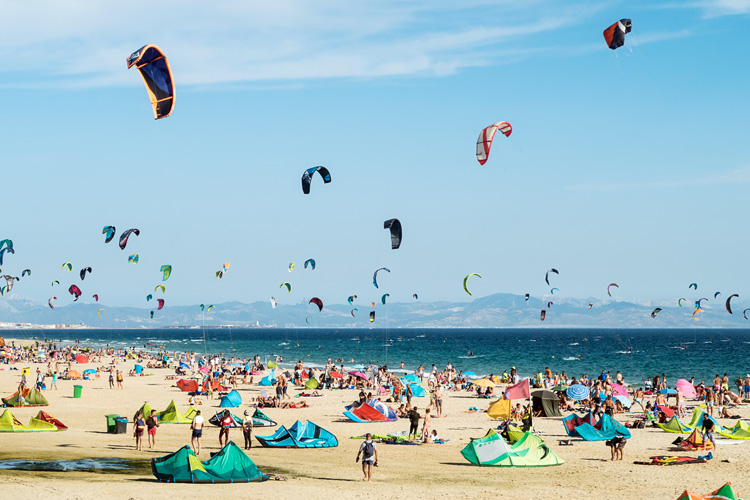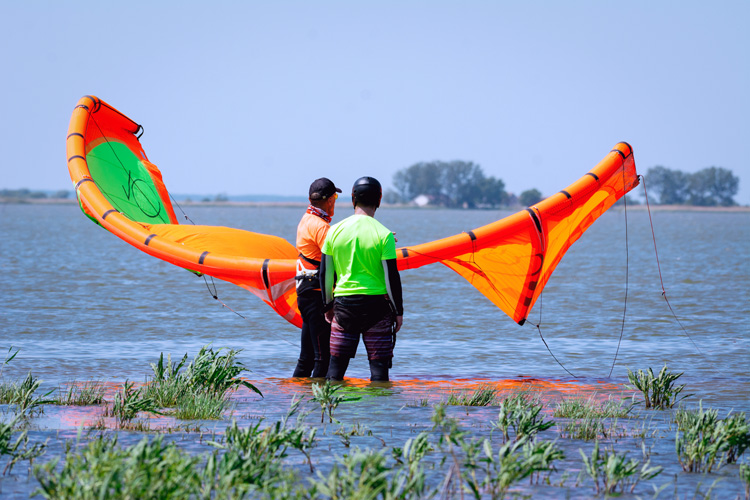Kiteboarding is an extreme water sport that requires responsibility and a lot of common sense.
Despite being invisible, the wind is a very powerful source of energy and a sometimes unpredictable force of nature.
An unexpected shift in weather patterns can dramatically put the life of kiteboarders, water sports enthusiasts, and beachgoers in danger.
There are some classic mistakes you could avoid in order to improve the quality of your experience and reduce the chances of injuries.
But there are also a few quick and straightforward dos and don'ts you can memorize that will make kiteboarding a pleasant and exciting outdoor activity.

Play It Safe
Whether you're a first-timer or an intermediate or advanced rider, the following bullets will make you a better and safer kiteboarder.
- Avoid grabbing the kite line directly with your hands - use the bar and its features;
- When learning kiteboarding, the student should be facing downwind and not upwind;
- A short leash should be hooked in front of the harness and never hanging loose;
- Kite instructors should continuously communicate with students using spoken and sign language;
- Kite instructors should be 100 percent focused on their students and sharing knowledge upwind of their kites;
- A beginner kiteboarder should perform a water start in waist-high water and never on the shore break or close to dry sand;
- The kite bar should be adequately rigged up with the leash and chicken loop correctly attached;
- Always lift the kite by grabbing the leading edge with your back facing the wind;
- Kiteboarders should never sail without a helmet and personal flotation device (PFD);
- Kiteboarders must keep a safe distance - two kites - between each other - riding close is dangerous and unsafe;
- If the weather conditions are changing fast, read the clouds, and play conservatively;
- Don't ride your kite in gusty and stormy, 35-knot plus offshore winds if waves are double overhead and breaking over shallow waters or reefs;
- Launch your kite toward the water and avoid getting it flying near obstacles or over land;
- Always carry a kite hook knife with you all the time - you may need to cut a line quickly;
- The red side of the kite bar must always be on the left side;
- Are you riding a foiling kiteboard? Don't forget your helmet and impact vest - they're mandatory;
- Always respect the right of way rules and avoid collisions at all costs;
- Never perform tricks and maneuvers close to the shore;
- Wear a pair of polarized sunglasses - reduce the chances of developing snow blindness, sunburn on the cornea, macular degeneration, and cataracts;
- Always perform a pre-riding warm-up routine and a post-riding stretching exercise;
- Do not play around by jumping on the beach with your kite;
- Do not take pictures downwind of a kiteboarder;
- Always check your lines before launching the kite - they may need to be replaced;
- If you feel your equipment is overpowered, play it safe and think about cutting your session shorter;
- Do not kite further away from shore than you can swim - in case of an equipment malfunction, you are just a swimmer;
